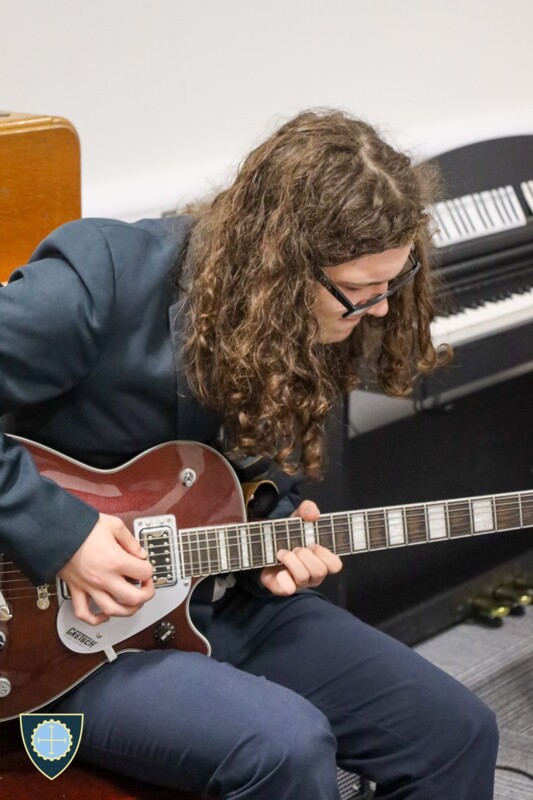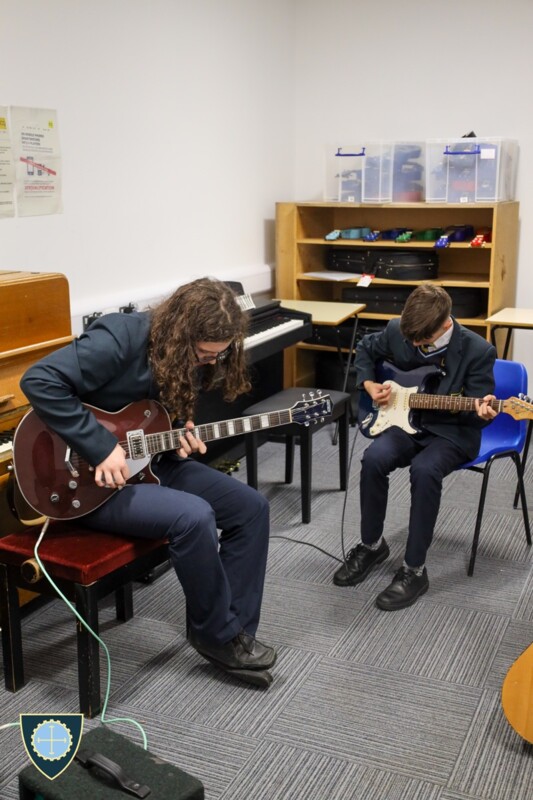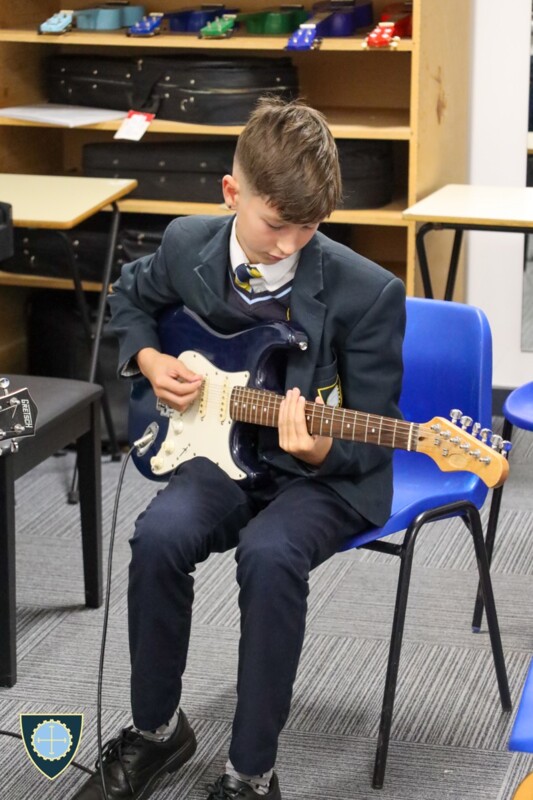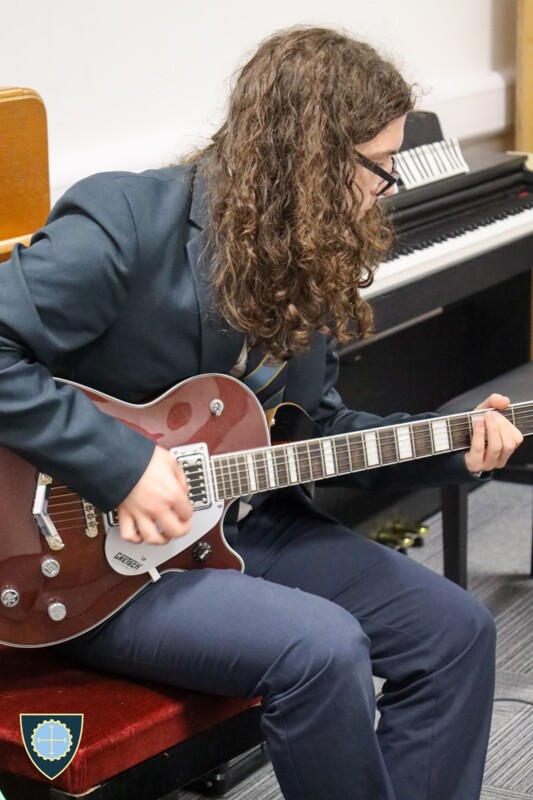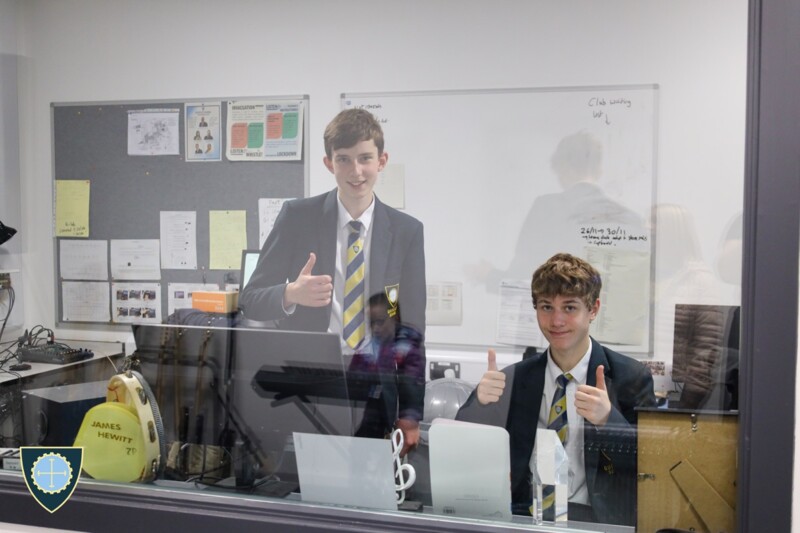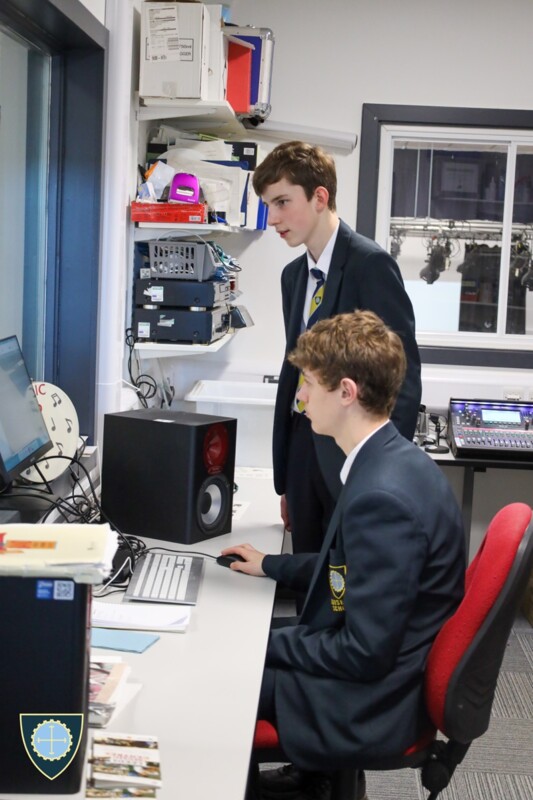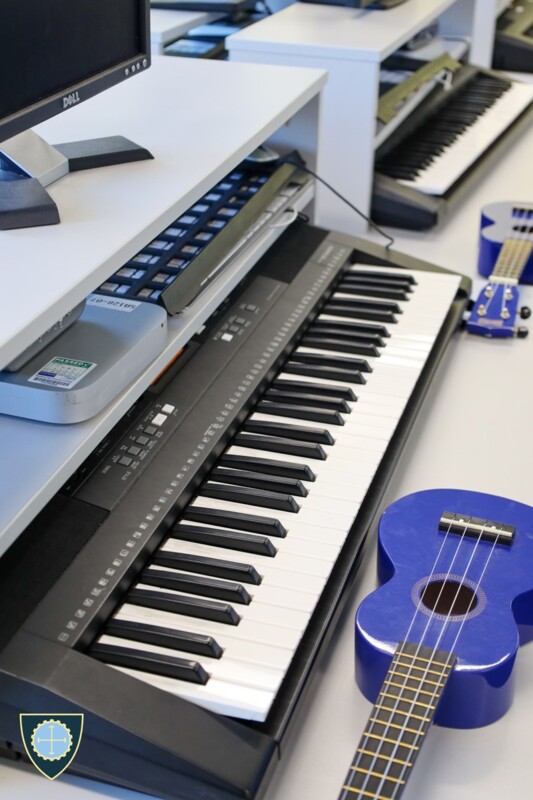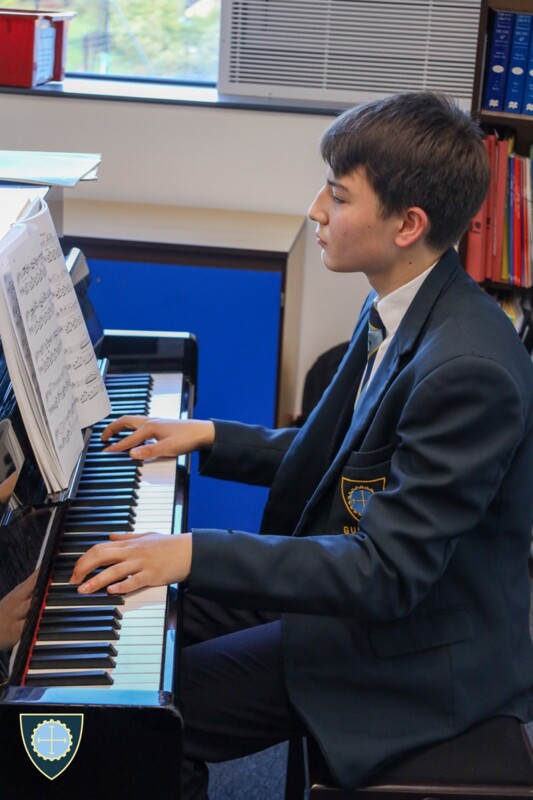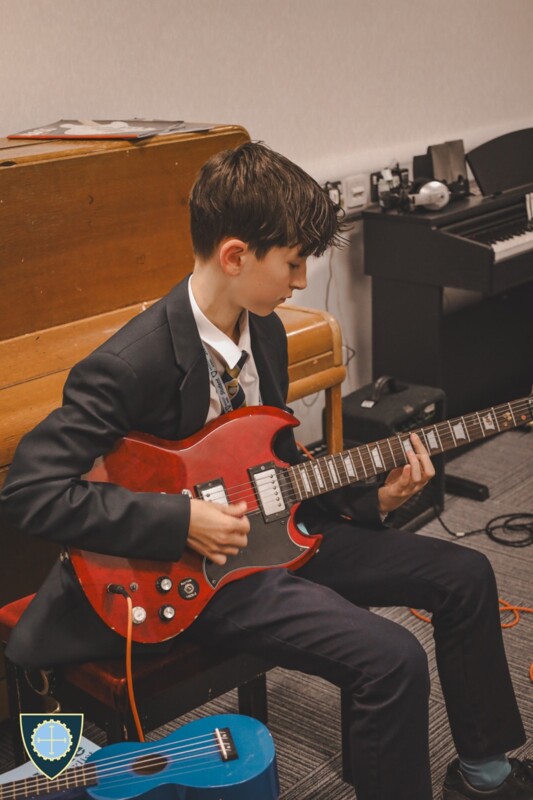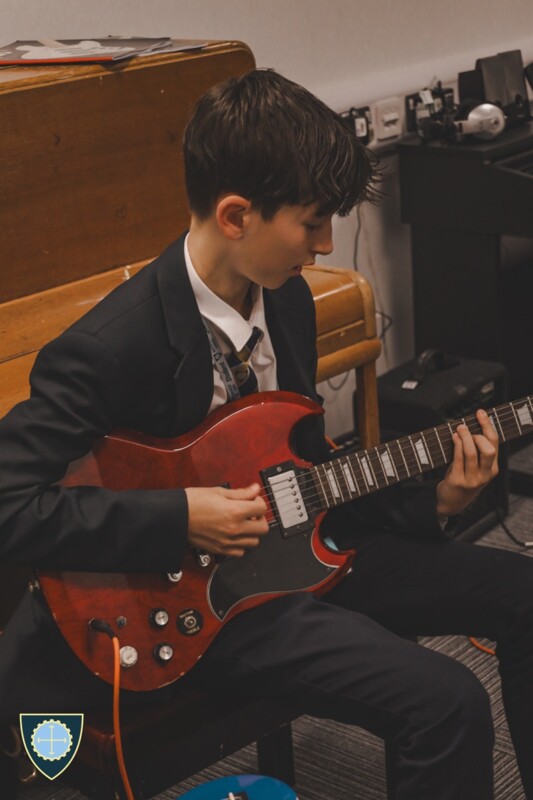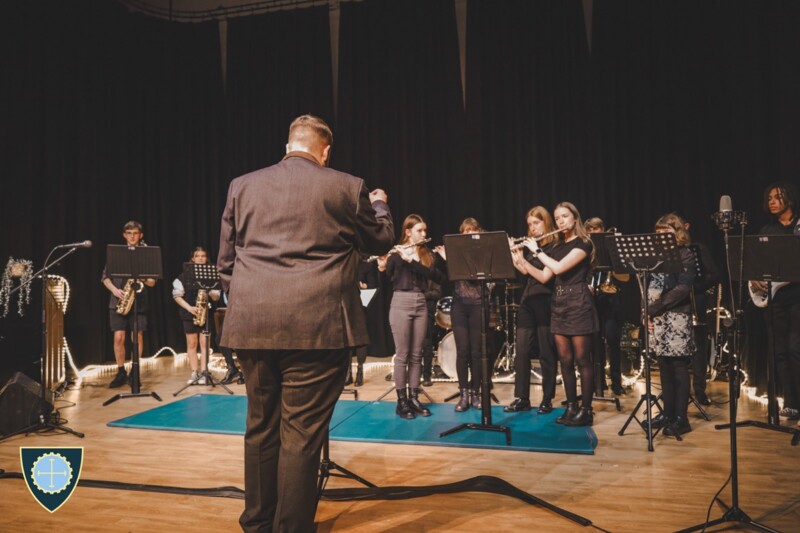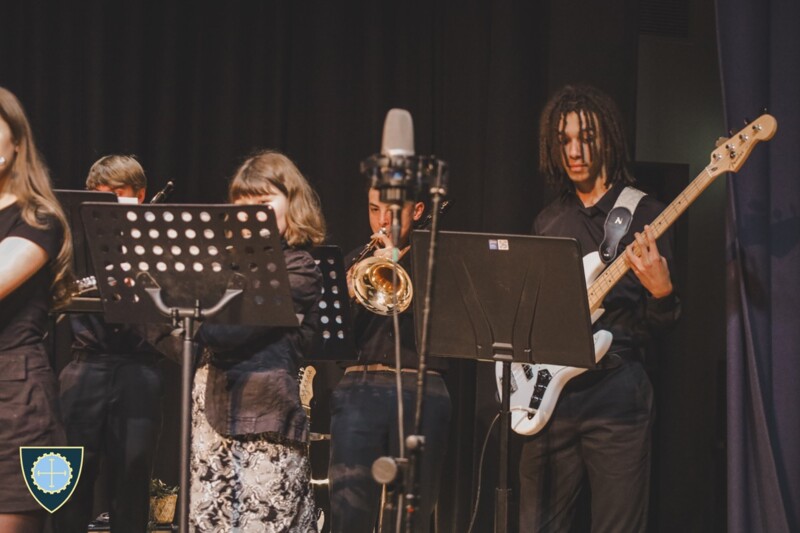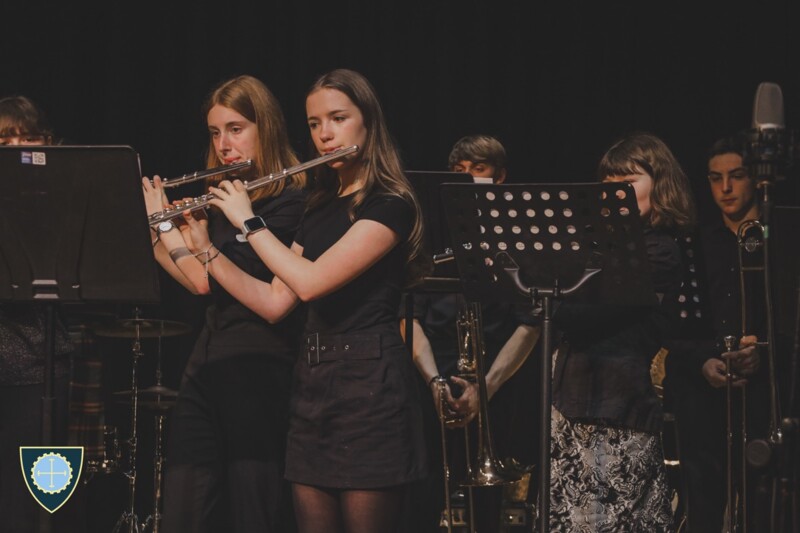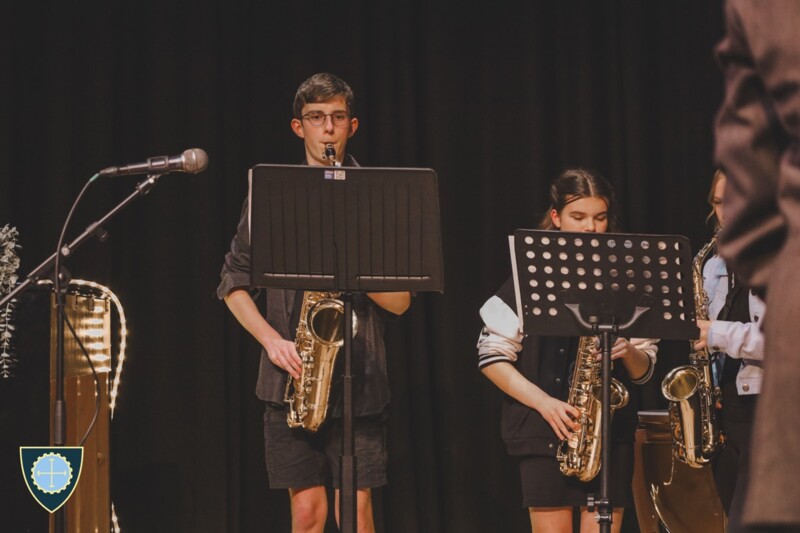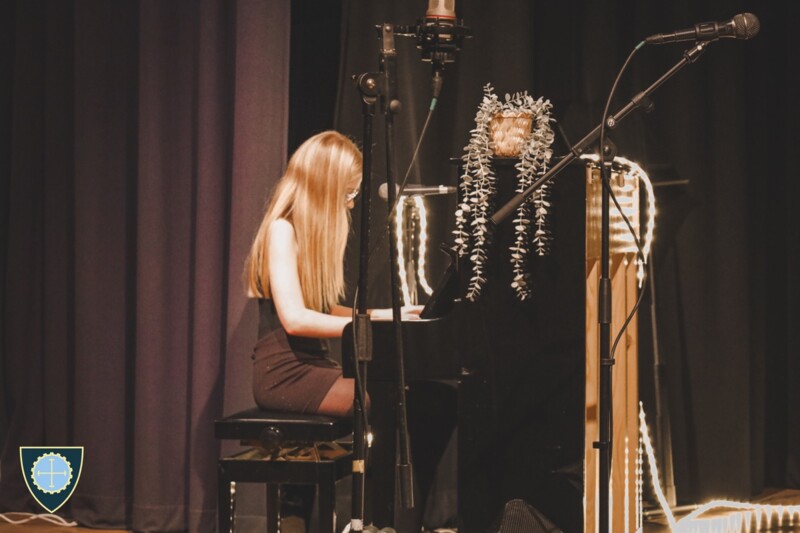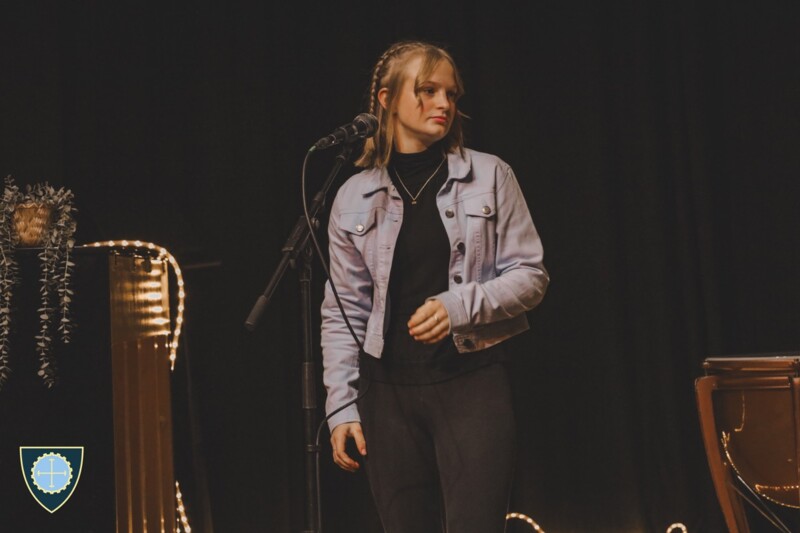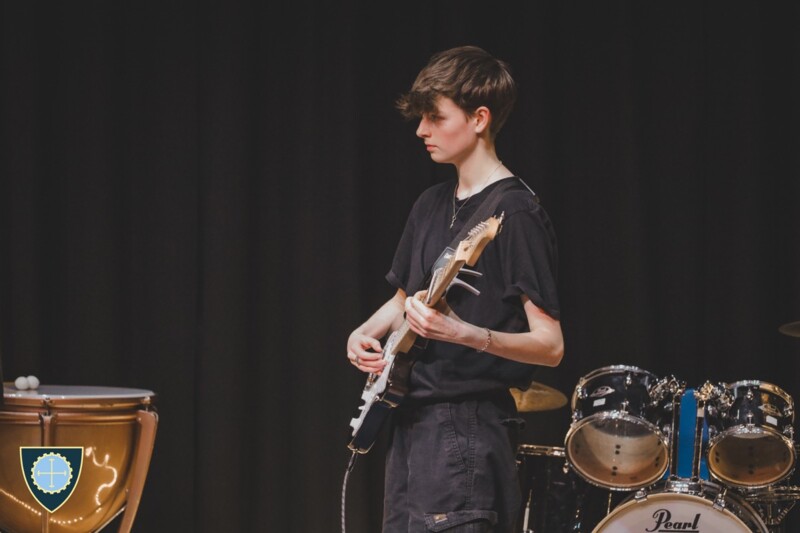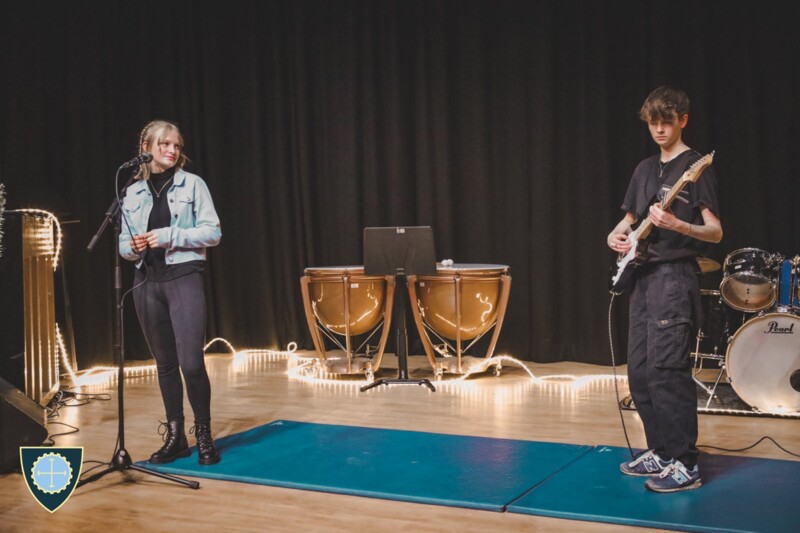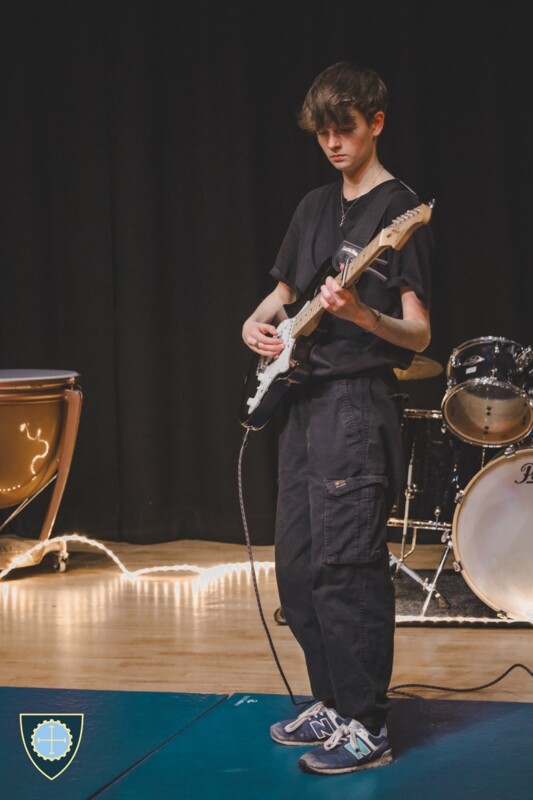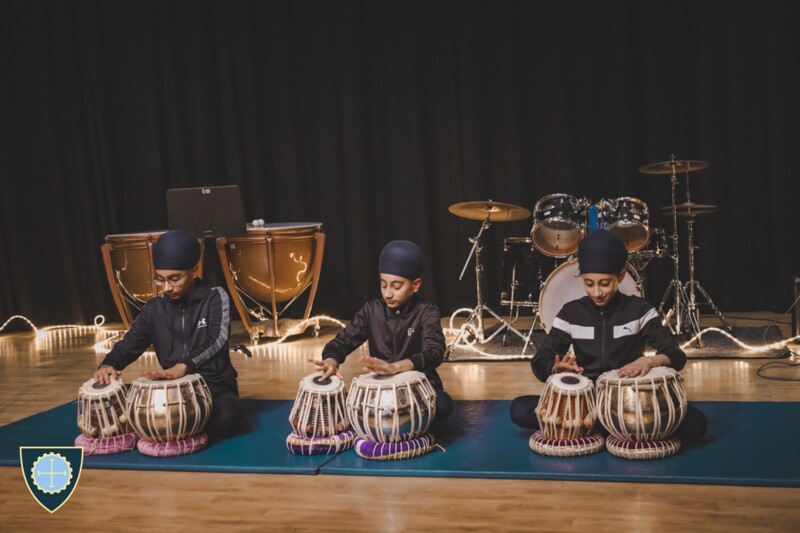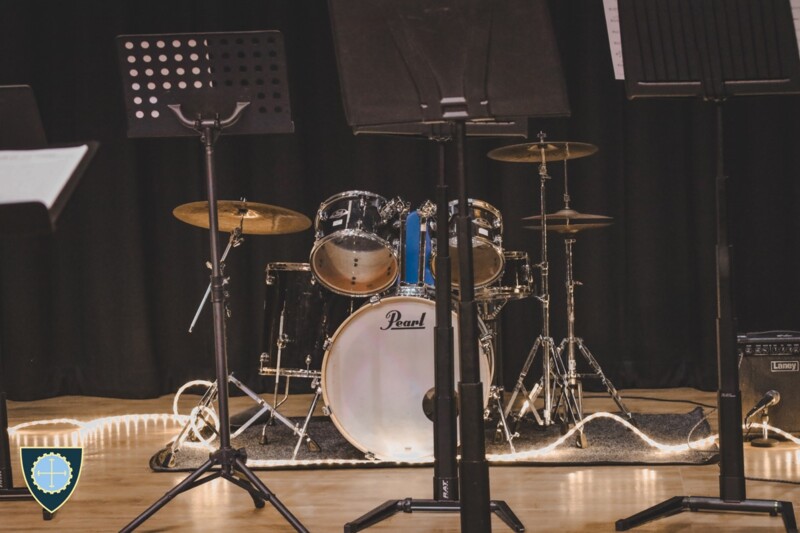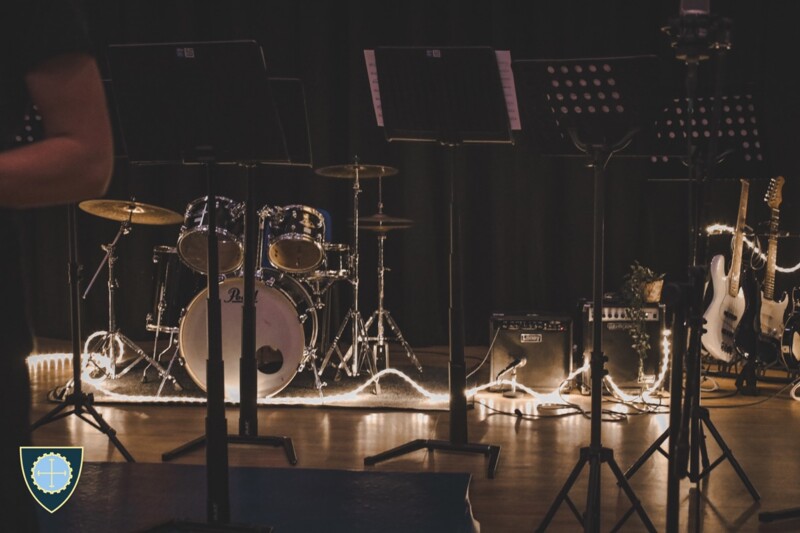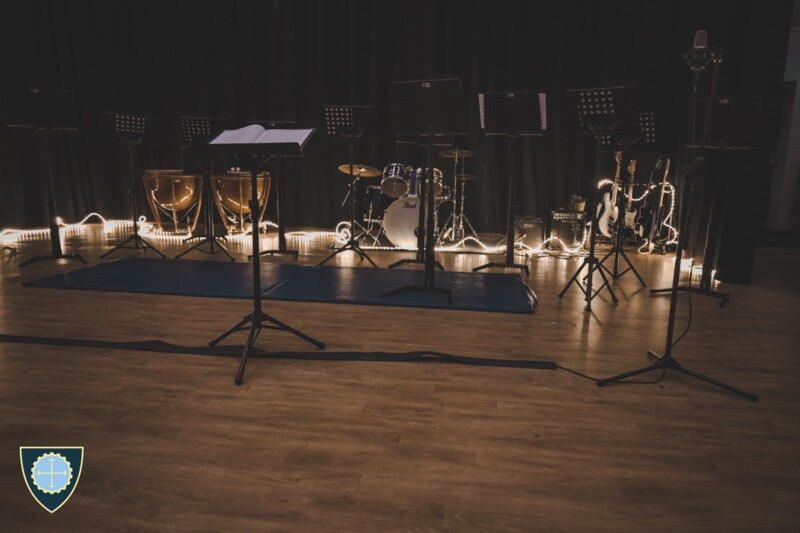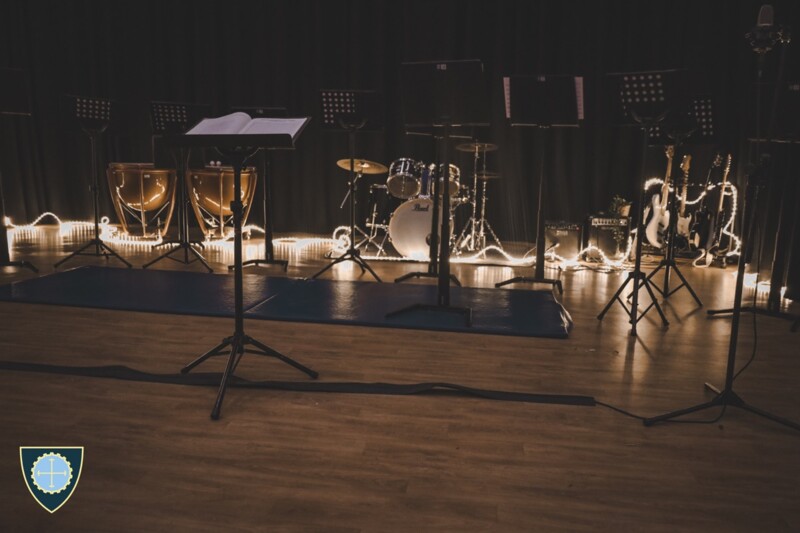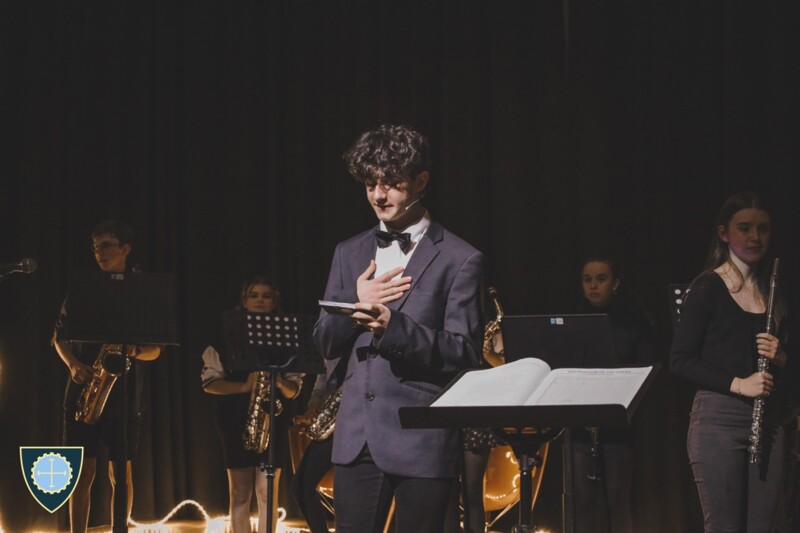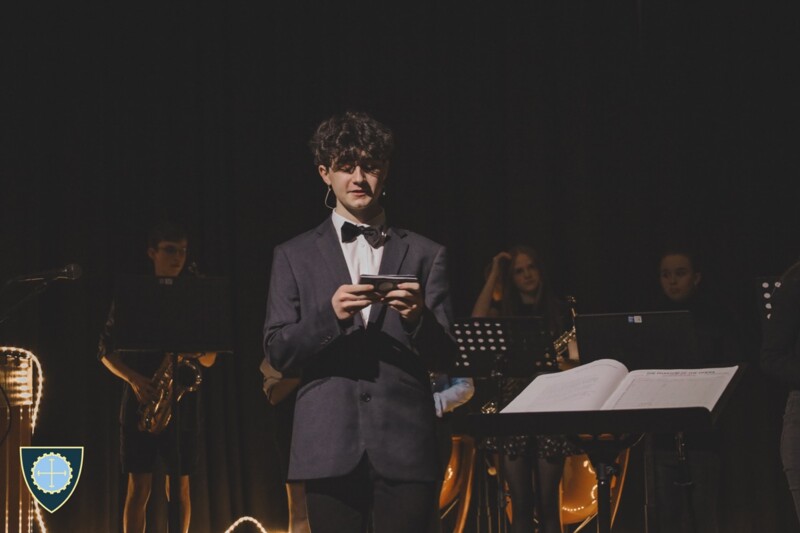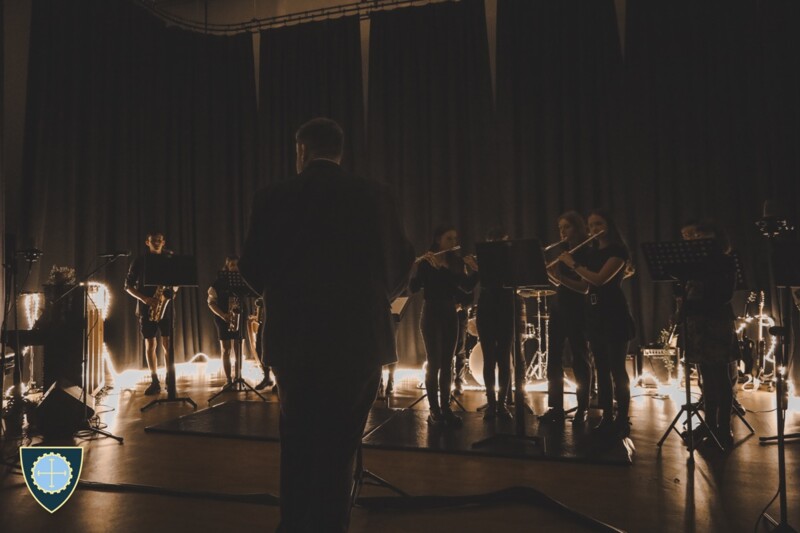
GCSE Music
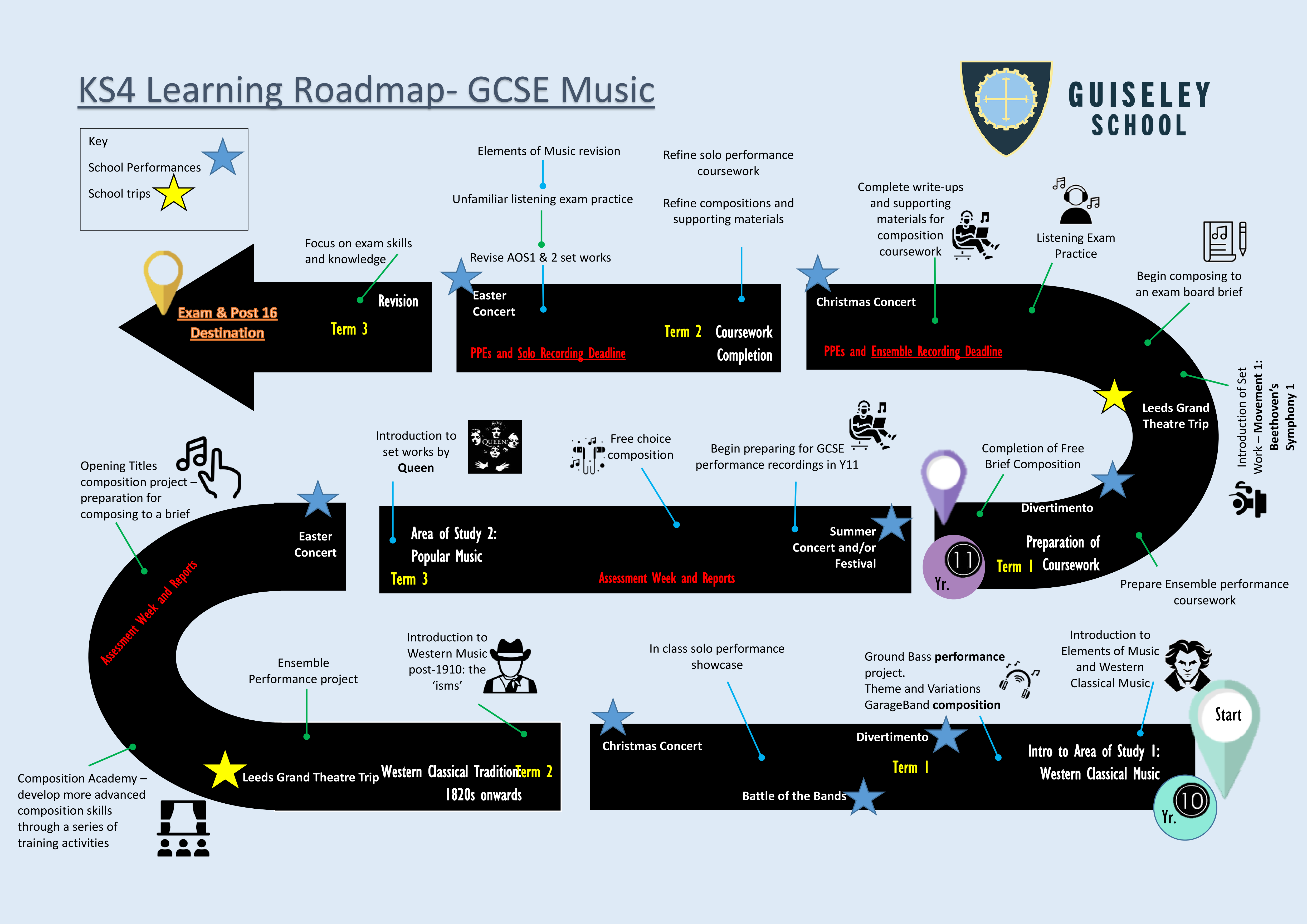
The AQA GCSE Music course builds key skills in performance, composition, and analysis. Students enhance technical ability and creativity through solo and ensemble performances, and develop composition skills with original pieces. The listening exam sharpens their ability to analyse unfamiliar music and apply knowledge of different genres. This course fosters communication, critical thinking, and creativity, opening doors to various careers in music and beyond.
The AQA GCSE Music course is assessed in two ways – non-examined assessment (coursework) and a 1hr 30m exam in the Year 11 examination period.
Non-Examined Assessment
60% of the GCSE Music course is completed before students sit their GCSE Music paper. Non-examined assessment (coursework) components are split into two parts:
Performance (30%): students are to produce a solo and ensemble (group) performance with a minimum combined duration of 4 minutes (at least 1 minute MUST be ensemble performance). This performance must be of ambitious, yet obtainable repertoire that shows accurate and expressive playing/singing. Students receive a subsidised peripatetic lesson each week to support in the preparation of this component.
Each performance is marked out of 36 marks – 15 marks are awarded for technical control (accuracy), 15 are marked on expression and interpretation and 6 marks are awarded for the level of difficulty of the piece.
Composition (30%): students will compose two pieces of music in Year 11 with a minimum combined duration of 3 minutes. One piece is entirely free choice – candidates could write a song, string quartet, Jazz piece or Musical Theatre ballad to name just a few options. The second composition is to an exam board set brief. Students can choose from 1 of 4 briefs that they’ll compose a piece to meet. This can be composed on Sibelius notation software or GarageBand/Logic Pro X DAW software.
Each composition is marked out of 36 marks split into two groups of 18 and awarded on students approach to the below groups of musical elements:
| Marks | Musical Elements |
| 18 | rhythm, metre, texture, melody, structure, form |
| 18 | harmony, tonality, timbre, dynamics, phrasing, articulation |
The Listening Paper
The 1hr 30m exam is split into two sections:
Section A: Unfamiliar Listening
Section B: Contextual Understanding
Section A:
For section A, students will have explored a wide range of genres and musical periods through the Western Classical Tradition (Baroque Period from 1650 to 20th Century Musical Movements such as Minimalism), Popular Music styles from the 1960s to present day and traditional music, and learnt key features of these styles, linking their knowledge to the different musical elements. They’ll be expected to listen to unfamiliar music and answer questions by applying their prior knowledge to unfamiliar music.
Section B:
Students will analyse a movement from Mozart’s Clarinet Concerto and three songs from the musical Little Shop of Horrors (LSOH) (Prologue/Little Shop, Mushnik and Son, Feed Me) by breaking down the piece according to the musical elements and will have two short sets of questions to answer worth 14 marks each. Most questions are 1-2 mark answers but students are expected to articulate their analytical understanding in an 8-mark extended essay on both Mozart’s work and LSOH.
Teaching Gadget: https://teachinggadget.com. Games to develop and train aural perception skills for section A of the paper. Students have the logon information for this.
BBC Bitesize: https://www.bbc.co.uk/bitesize/examspecs/zfwv7nb
YouTube: instrument identification quizzes, revision videos, score walk-throughs for section B analysis.
Students can book practise rooms at lunch and afterschool to work on their performances. If students need additional support, lunchtime rehearsal will be made mandatory.
We stock a GCSE Revision book available to purchase via ParentPay.
Following NEA completion, we will be offering GCSE Revision sessions afterschool – day and location to be confirmed.
